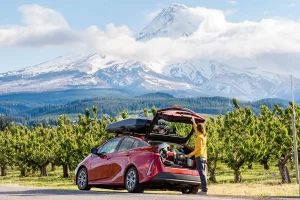Road safety is at risk when there are commercial vehicles involved in collisions, hence the need for trucking companies and drivers to observe strict federal and state laws.
These measures, led by FMCSA, try to balance among safe operations of motor carrier firms while on the country’s roads. This guide deals with various aspects of road haulage safety legislation and it also highlights future changes that may be taking place within this sector.
Safety First
Safety should be given topmost priority in truck safety regulations. Comprehensive written policies, driver training programs as well as advanced safety technologies contribute towards better driving habits resulting into fewer accidents. Moreover, creating a culture of safety among drivers through awareness about DOT compliance requirements helps to reduce risks, improve fleet image and enhance employee turnover rates within an industry notorious for high staff attrition levels.
In their bid to promote user protection on highways, truckers need to follow some best practices when passing through work areas or intersections; these include watching out for blind spots and maintaining enough gap between their vehicle and other cars behind them so that rear end crashes can be avoided. Also note that large trucks take twice more time than smaller cars to stop therefore a minimum of three seconds should always be left by a driver between his/her front bumper and any other automobile he/she is following.
Particularly while reporting for duty or during duty execution hours’ commercial vehicle operator compliance must strictly adhere with HOS rules which acts as a preventive measure against car-truck accidents caused by sleepy driving syndrome; this problem could also be mitigated through application of electronic speed limiters that reduces extended period behind steering wheel among drivers.
Hazardous Materials
For hazardous material transportation trucks must comply with Department Of Transportation (DOT) hazmat regulations such as securing its load properly keeping current records on safety. In addition these stipulations ensure everybody stays safe on the highways.
Some commenters including Air Products Chemicals Inc (Air Products) and American Pyrotechnics Association (APA) support the SNPRM’s objective of facilitating safe transport for hazardous materials while enhancing motor carrier safety; however, they feel that cost estimates in it are not consistent with DOT data quality standards but rather arbitrary and capricious.
According to them Hazard Zone B material should not require detailed routing plans for vehicles instead drivers should make adjustments when directed by enforcing authority or during emergency so as to minimize traffic jam accidents congestion while still guaranteeing intactness at final destination.
Cargo Securement
Lack of load securing knowledge has been a menace for road travelers especially along highways. These goods become dangerous if they shift, fall off or get separated since apart from themselves being at risk on the road other motorists and pedestrians are equally exposed to danger.
Federal government has set strict rules which must be followed when securing loads; this covers different methods that can be applied in securing such as use appropriate tie down devices, blocking equipment as well as selecting correct types of straps depending on situation among others also having enough stock of tarpaulins would help.
These regulations should be observed by all drivers dealing with trucks failure to do so may lead to FMCSA violations coupled with fines charged on unsecured cargoes. Routine examination of loads need to be done together with checks on fastening devices especially when transporting inflammable substances so as ensure compliance with safety measures
Safety is the most important thing in the trucking industry because truck drivers have to take strict measures such as driving experience, medical certificates and background checks before they are issued with licenses. Also, it is important that records are kept well so that they can be used for compliance purposes.
These documents help to verify whether drivers meet the industry standards or not and if they follow hazardous materials laws besides HOS (hours of service) rules. Any record which is not true or complete may cause the driver involved to be fined heavily or sued successfully thereby making him incur high legal costs.
Regular inspection of vehicles should be done in order to find out any possible fault that might lead into an accident – this is particularly crucial when transporting inflammable substances.
The trucking business is a complex and demanding sector with huge risks involved; safety violations against any established regulations can bring about severe consequences both on individual drivers as well as companies themselves ranging from reputation damage to loss of future prospects and partnerships. It is therefore necessary for all organizations within this field including their employees such as drivers’ staffs among others understand intricacies in law thus viewing commitment towards safety not only as legal but also moral imperative coupled with being strategic choice at large for them.





More Stories
Budget Truck Rental
Truck Dealers
Important Things to Know As a Truck Driver